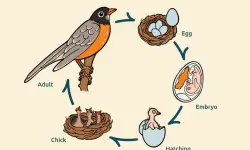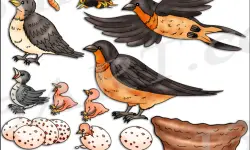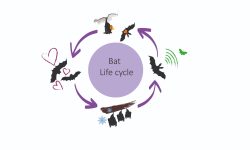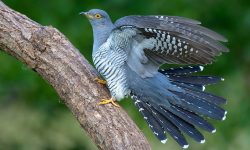Nevada’s wide deserts, rocky canyons, dense forests, and alpine valleys provide a surprising variety of habitats for owls. From elusive forest dwellers to bold desert hunters, these nocturnal birds are perfectly adapted to the state’s dramatic landscapes. In this guide, we’ll explore 12 owl species that call Nevada home—some year-round residents, others seasonal visitors—along with their identifying features, habitat preferences, and unique behaviors.
1. Great Horned Owl (Bubo virginianus)
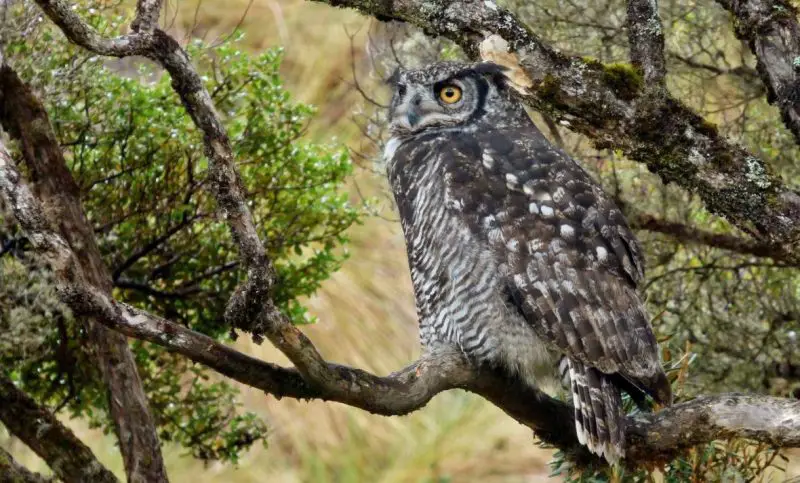
The Iconic Night Hunter
With commanding yellow eyes, thickly feathered tufts resembling horns, and a thunderous hoot that rolls across valleys and forests, the Great Horned Owl stands as the undisputed symbol of nocturnal power across North America. In Nevada, this formidable raptor thrives in an astonishing array of habitats—from suburban parks and agricultural fields to arid deserts, juniper woodlands, and rugged mountain slopes.
Built for strength and stealth, the Great Horned Owl is one of nature’s most versatile apex predators. It boasts an immense grip force, capable of crushing the spine of prey with a single squeeze. Its diet reflects this raw power and adaptability, including mammals as large as jackrabbits and skunks, venomous snakes, and even other raptors. Few animals are beyond its reach when the owl launches silently from a high perch, wings spread in near-silent flight.
This species is active year-round and most often encountered at dusk or dawn, when its resonant hoots mark territorial boundaries or signal a mate. Though usually solitary and well-camouflaged against tree bark or rocky outcrops, a keen observer might catch a glimpse of this sentinel perched motionless, scanning the darkness for the slightest sign of movement below.
In the ecosystems of Nevada, the Great Horned Owl plays a critical role as a regulator of prey populations. With its unmatched adaptability, it has not only survived but flourished across both wild and human-altered landscapes—making it a true icon of the American night sky.
2. Western Screech-Owl (Megascops kennicottii)
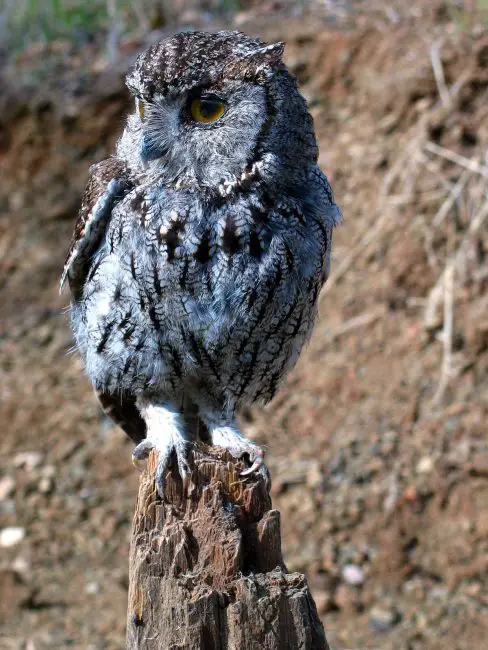
The Small Owl With a Big Voice
Discreet and compact, the Western Screech-Owl is a master of concealment, often mistaken for a knot in the tree bark it mimics so well. Though its name suggests a sharp cry, this owl rarely screeches—instead, it emits a mellow, bouncing trill, like the soft whinny of a miniature horse, echoing hauntingly through Nevada’s riparian corridors and canyon walls.
Measuring just 7 to 10 inches tall, this stocky little owl thrives in a variety of habitats at lower elevations, from desert oases and cottonwood groves to suburban backyards lined with mature trees. Its adaptability is aided by its willingness to use man-made nest boxes, making it a silent neighbor in both rural and residential landscapes.
The Western Screech-Owl is a generalist predator, hunting primarily at night using its excellent vision and hearing. It feeds on a broad range of prey, including beetles, moths, crickets, small rodents, tree frogs, and even small birds or lizards. With swift, silent flight and a quick strike, it can capture unsuspecting prey from perches or mid-air.
Though often overlooked due to its size and superb camouflage, this little owl plays an essential role in controlling insect and rodent populations. Its soft, rhythmic calls on warm desert evenings are a subtle but enchanting reminder of the life stirring in Nevada’s shadows.
3. Barn Owl (Tyto alba)
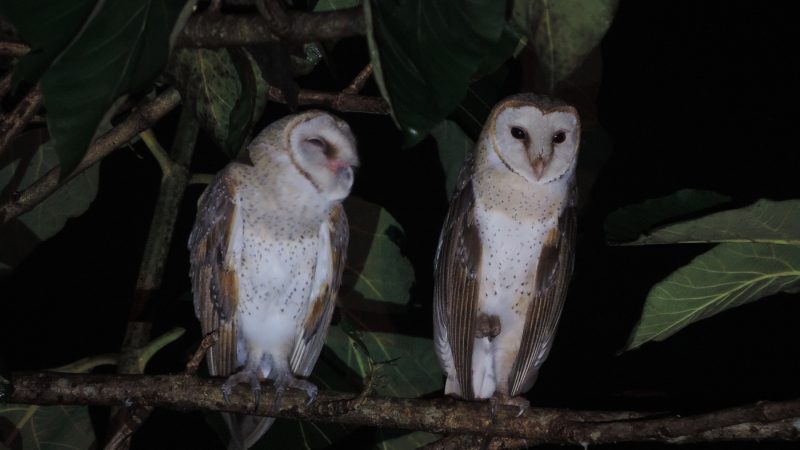
The Ghost of the Night Sky
With its slender wings, snow-pale plumage, and otherworldly appearance, the Barn Owl glides across Nevada’s open country like a spirit on the wind. Silent in flight and chilling in voice, this species is one of the most widespread owls in the world—and yet still manages to feel elusive and ethereal.
Its heart-shaped facial disc is more than a visual hallmark; it functions as an acoustic dish, directing sound to its asymmetrical ears. This remarkable adaptation allows the Barn Owl to hunt entirely by sound, detecting the faintest rustle of a mouse in total darkness. Few predators match its precision when striking from above.
Barn Owls favor open habitats—farmlands, sagebrush plains, and grassy deserts—and readily nest in barns, old silos, cliff cavities, and nest boxes. Their diet consists almost exclusively of small mammals, making them indispensable allies to farmers in controlling rodent populations. A single Barn Owl family can consume thousands of mice in a breeding season.
Though largely silent by day, they become active after sunset, their eerie screeches and ghostlike silhouettes gliding just above the fields. The Barn Owl’s presence is both haunting and beneficial—a spectral sentinel watching over Nevada’s quiet nights.
4. Northern Saw-whet Owl (Aegolius acadicus)
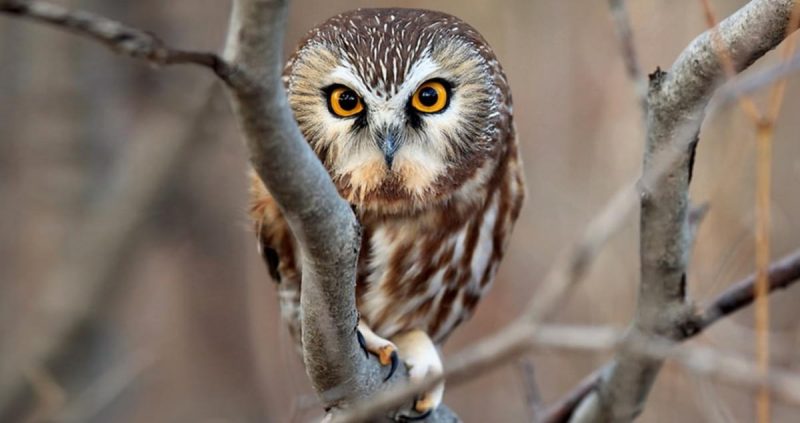
The Tiny Tree-Dweller
No larger than a pint glass but brimming with intensity, the Northern Saw-whet Owl is one of Nevada’s most secretive and enchanting woodland predators. Named for its high-pitched, repetitive whistle that resembles the sound of sharpening a saw, this owl’s call cuts through the stillness of mountain forests like a forgotten melody.
Mostly found in the Sierra Nevada and other high-elevation pine forests, the Northern Saw-whet prefers dense, mature coniferous woods with plenty of cover for daytime roosting. During fall migration, however, it may descend into lower elevations, where it occasionally surprises birders in unexpected settings.
Despite its small size—typically just 7 to 8 inches long—this owl is an efficient nocturnal hunter. Its large, forward-facing eyes provide excellent night vision, while its sensitive ears help pinpoint prey under snow or leaf litter. Its diet consists primarily of deer mice and voles, though it won’t hesitate to snatch a small bird or insect when the opportunity arises.
Seldom seen and rarely still, the Northern Saw-whet Owl is a fleeting whisper in the trees—a wide-eyed phantom of the forest whose tiny frame belies its fierce hunting instincts.
5. Long-eared Owl (Asio otus)
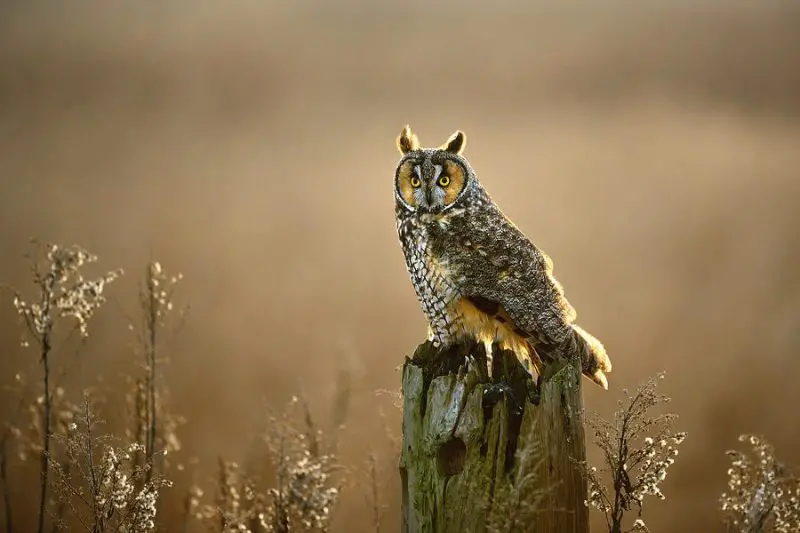
The Master of Stealth
Tall, slender, and elusive, the Long-eared Owl is a master of concealment, perfectly engineered to vanish into the dense tangles of Nevada’s thickets and conifer groves. With long, narrow wings and upright feather tufts that resemble mammalian ears, it presents a striking silhouette—but spotting one takes patience and a sharp eye.
By day, these owls roost in tight clusters, often communally during the winter months, tucked deep within willow thickets or pine stands. Their streaked and mottled plumage mimics branches and bark so precisely that even experienced birders can overlook them at close range.
At night, they become active and silently patrol the edges of grasslands, meadows, and riparian corridors. Voles, mice, and other small mammals make up the bulk of their diet. With a low, barking hoot and ghostlike flight, they often go unnoticed even as they pass overhead.
Long-eared Owls are more frequently detected during migration and in winter, when they gather in roosts that sometimes hold a dozen or more individuals. Their presence signals a healthy ecosystem rich in cover and prey—an elusive reward for those who know where to look.
6. Short-eared Owl (Asio flammeus)
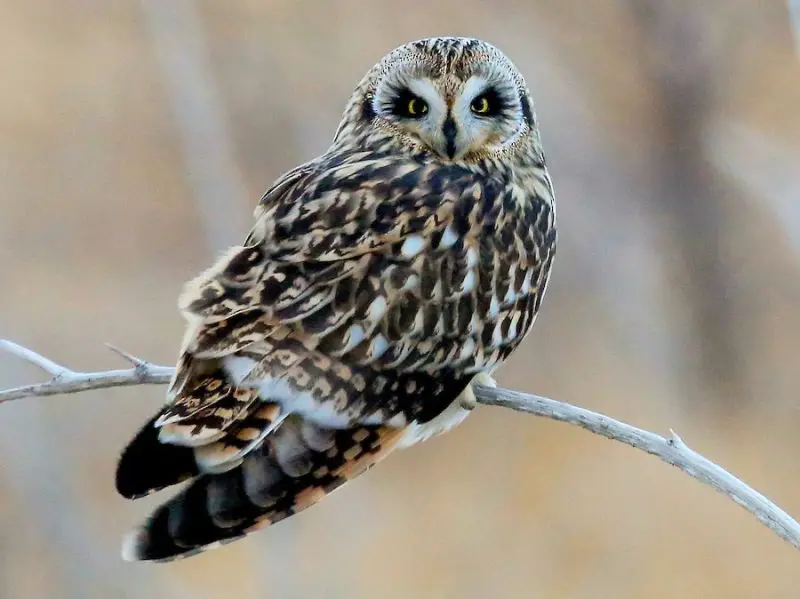
The Ground-Hunting Nomad
Wind-swept grasslands and sagebrush basins of Nevada come alive at dusk when the Short-eared Owl begins its low, fluttering patrol. Unlike most of its nocturnal cousins, this owl often hunts by daylight, especially during crepuscular hours, with buoyant, moth-like wingbeats and a style more reminiscent of a harrier than a traditional owl.
The Short-eared Owl is a highly nomadic species, following prey abundance across seasons and landscapes. In Nevada, it appears primarily in winter and early spring, favoring wide-open spaces like valleys, wetlands, prairies, and even agricultural fields.
Its round facial disc and intense yellow eyes give it a look of perpetual astonishment, but its hunting skills are sharp and precise. It relies on both hearing and sight to detect movement in the grass below, striking with a fast, gliding dive. Unlike most owls, it nests directly on the ground, using shallow depressions lined with grasses or feathers.
Its adaptability to open habitats and semi-diurnal habits make it one of the most visible owls in Nevada—yet its fluctuating presence and cryptic coloration still lend it an air of unpredictability. The Short-eared Owl is a wanderer by nature, appearing suddenly, hunting in silence, and vanishing just as quickly into the wind.
7. Burrowing Owl (Athene cunicularia)
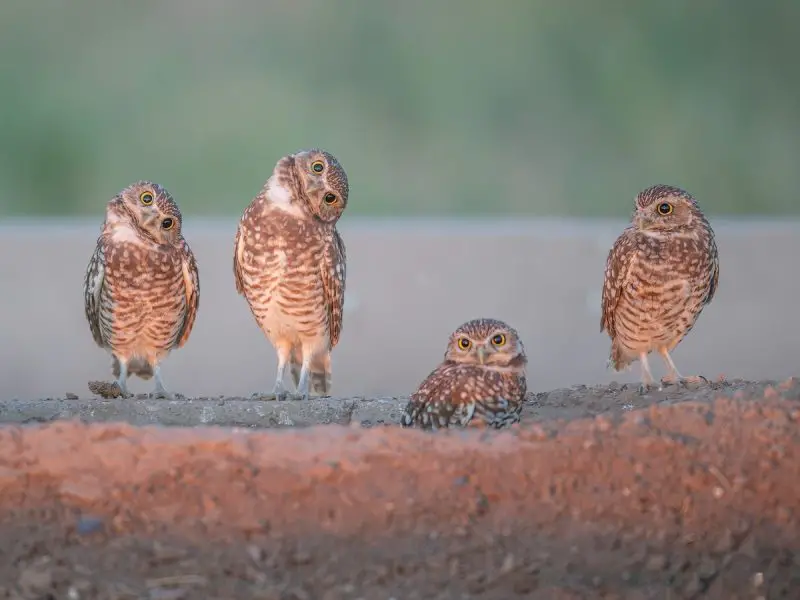
The Daylight Dweller
With bright yellow eyes, spindly legs, and a perpetually alert expression, the Burrowing Owl brings unexpected charm to Nevada’s sunbaked deserts and wide-open grasslands. Unlike most owls, it is primarily active during the day, especially at dawn and dusk, making it one of the most visible and endearing raptors in the state.
True to its name, this owl makes its home underground. It often reuses abandoned burrows dug by prairie dogs, ground squirrels, or tortoises, sometimes even excavating shallow tunnels of its own. These subterranean nests offer shelter from predators and the extreme heat of the desert.
Burrowing Owls have a unique hunting style that includes running across the ground and pouncing with surprising speed. Their diet is equally eclectic—ranging from beetles, grasshoppers, and scorpions to small mammals and lizards. During breeding season, they may cache dozens of prey items in their burrow to feed their growing chicks.
Their quirky behavior—head-bobbing displays, tail-flicking, and alarm calls that mimic rattlesnakes—make them a favorite among birders and wildlife enthusiasts. You’ll often spot them perched on fence posts, rocks, or even irrigation pipes, scanning the horizon with wide-eyed intensity.
In a landscape dominated by heat and harshness, the Burrowing Owl is a lively desert sentinel: alert, adaptive, and full of character.
8. Flammulated Owl (Psiloscops flammeolus)
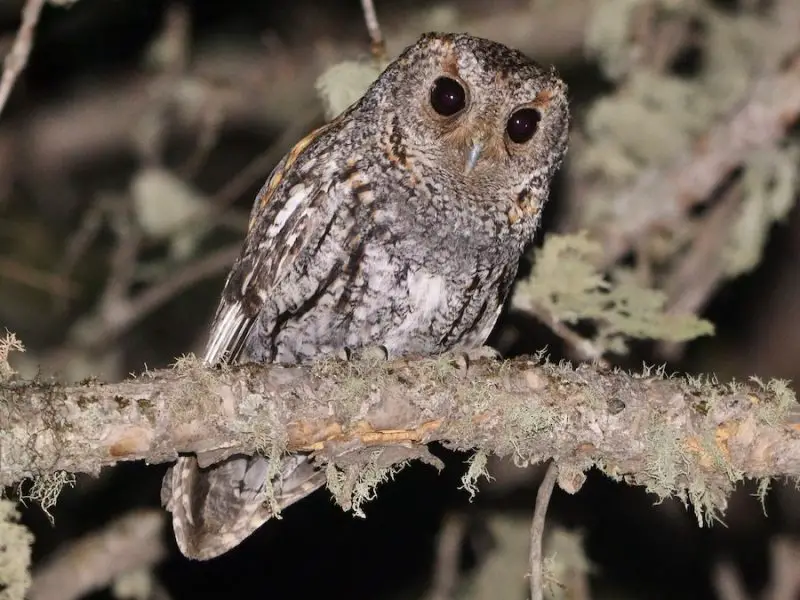
The Whispering Forest Ghost
Tiny, elusive, and cloaked in the deep shadows of Nevada’s montane forests, the Flammulated Owl is a mysterious presence few ever see but many hear. Measuring just 6 inches long and weighing less than two ounces, it’s one of North America’s smallest owls—and among its most secretive.
Its name comes from the faint reddish or “flame-like” streaks on its otherwise gray-brown plumage, helping it vanish among pine bark and dead leaves. Flammulated Owls are summer breeders in Nevada’s higher elevations, especially in mature ponderosa pine and mixed conifer forests. In autumn, they migrate all the way to Central America, where they spend the winter in subtropical woodlands.
This owl is a strict insectivore. It feeds almost entirely on moths, beetles, crickets, and other night-flying insects, often plucking them from mid-air with agile, acrobatic flight. Its call—a soft, low-pitched “boo” repeated at regular intervals—is easy to overlook and blends seamlessly with nighttime forest sounds.
Because of its quiet nature, nocturnal habits, and tiny size, the Flammulated Owl is rarely seen even by experienced birders. But for those who venture into Nevada’s mountain forests in late spring and early summer, its gentle, rhythmic hoots offer a haunting reminder of the life thriving in the darkness above.
9. Spotted Owl (Strix occidentalis)
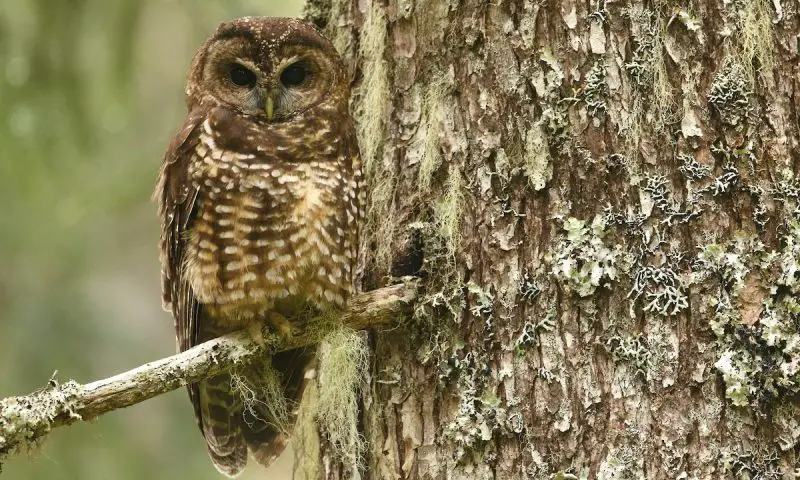
The Old-Growth Sentinel
Mysterious and reclusive, the Spotted Owl is an emblem of ancient forests and the ecological complexity they support. In Nevada, this medium-sized owl is primarily found in the Spring Mountains and secluded canyons along the California border, where pockets of old-growth forest still persist in otherwise fragmented landscapes.
Its deep brown eyes—unlike the yellow eyes of most owls—along with a rounded facial disk and soft, chocolate-colored plumage speckled with white, give it an unmistakable appearance. But it is the bird’s habitat preferences that truly define it. Spotted Owls rely on cool, mature forests with multilayered canopies, large-diameter trees, and a rich understory—conditions that support their prey and provide secure roosting and nesting sites.
Nocturnal and highly sedentary, they hunt quietly from perches, gliding low to snatch woodrats, flying squirrels, and other small mammals from branches or forest floors. Their dependence on intact ecosystems has made them one of the most intensively studied and controversial raptors in conservation biology.
Unfortunately, the Spotted Owl is under siege. Habitat loss from logging, development, and wildfire, combined with direct competition from the invasive Barred Owl, has driven steep population declines. Federally listed as a threatened species, it remains at the heart of debates over forest management and ecological preservation in the American West.
10. Great Gray Owl (Strix nebulosa)
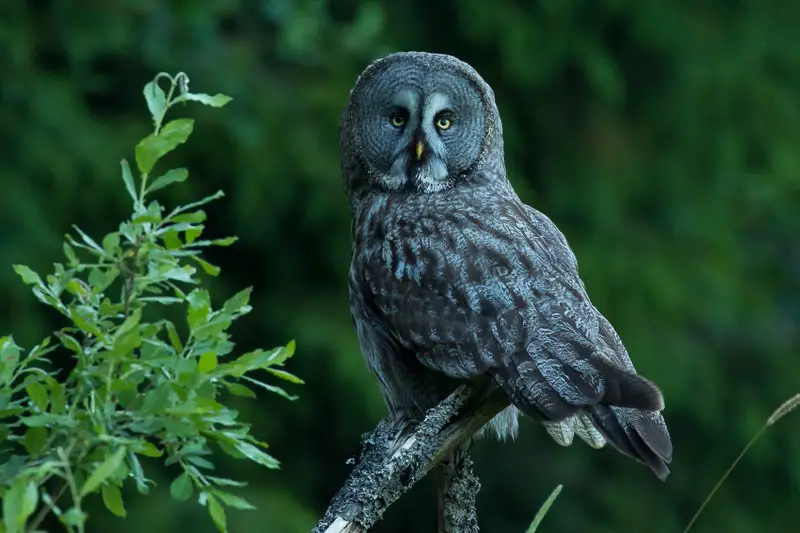
The Phantom of the North
Ethereal, silent, and immense, the Great Gray Owl is a ghostly presence that haunts the cold edges of the boreal forest. Though it is the tallest owl in North America, its size is largely an illusion created by fluffy plumage and an expansive facial disk; it actually weighs less than the bulkier Great Horned Owl.
In Nevada, the Great Gray Owl is a rare visitor, most likely to be encountered in remote montane habitats near the northern border. It prefers dense, moisture-rich coniferous forests that border open meadows or bogs, where snow-drifted clearings offer rich hunting grounds.
A patient ambush predator, it perches motionless for extended periods, relying on extraordinary hearing to detect rodents moving beneath thick snow or brush. Its facial disk functions like a satellite dish, funneling sound to highly sensitive ears capable of locating prey entirely by sound—even when hidden under a foot of snow.
These owls are solitary and cryptic, and their silent flight only deepens their reputation as forest phantoms. Rarely vocal except during the breeding season, they often pass unnoticed by casual observers. However, their sheer presence—when detected—is unforgettable: an elegant silhouette gliding through falling snow, or a pair of round yellow eyes staring from the shadows of a subalpine spruce.
In Nevada, the Great Gray Owl is a fleeting treasure of the north—more often a dream than a sighting, and all the more magical because of it.
11. Northern Pygmy-Owl (Glaucidium gnoma)
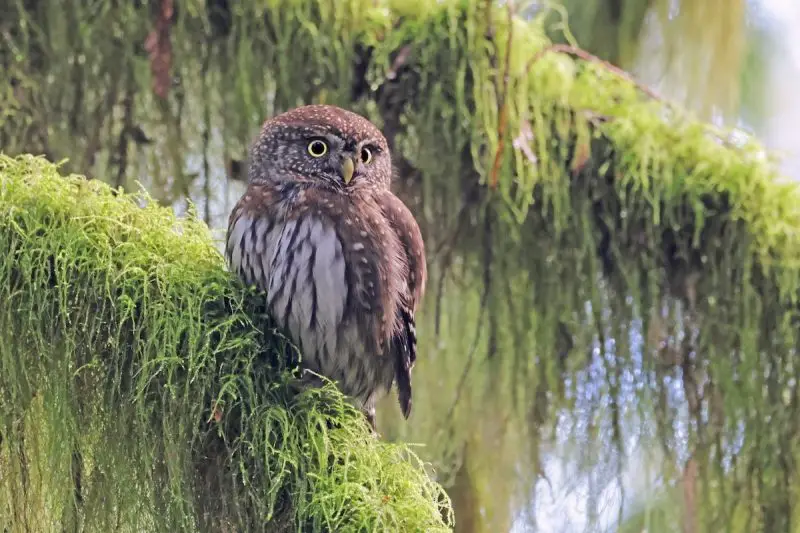
The Tiny Daytime Predator
Don’t let its size fool you—the Northern Pygmy-Owl may be barely bigger than a sparrow, but it carries the confidence and ferocity of a much larger raptor. Measuring just 6 to 7 inches in length, this diurnal hunter is one of the few owls active during daylight hours, making it more observable than many of its nocturnal kin.
In Nevada, it is typically found in montane forests, particularly in the northwestern part of the state, where mixed conifer and pine-oak woodlands provide excellent foraging opportunities. Unlike most owls, the Northern Pygmy-Owl often perches conspicuously on exposed branches, intently scanning for motion both above and below.
Its diet is diverse and bold. It preys on small mammals like mice and voles but is also well known for hunting birds—including chickadees and warblers—some nearly equal to its own body size. Insects, particularly large beetles and dragonflies, also make up part of its diet. What it lacks in mass, it makes up for in agility and aggression.
This owl is often betrayed by its distinctive call—a high-pitched, evenly spaced series of “toots”—and by the frantic mobbing behavior of songbirds trying to drive it away. With two black eye-spots on the back of its head, the Northern Pygmy-Owl adds to the illusion that it’s always watching, a clever defense against predators.
Fierce, fearless, and often hidden in plain sight, this tiny predator is a favorite among sharp-eyed birders willing to slow down and scan the forest carefully.
12. Snowy Owl (Bubo scandiacus)
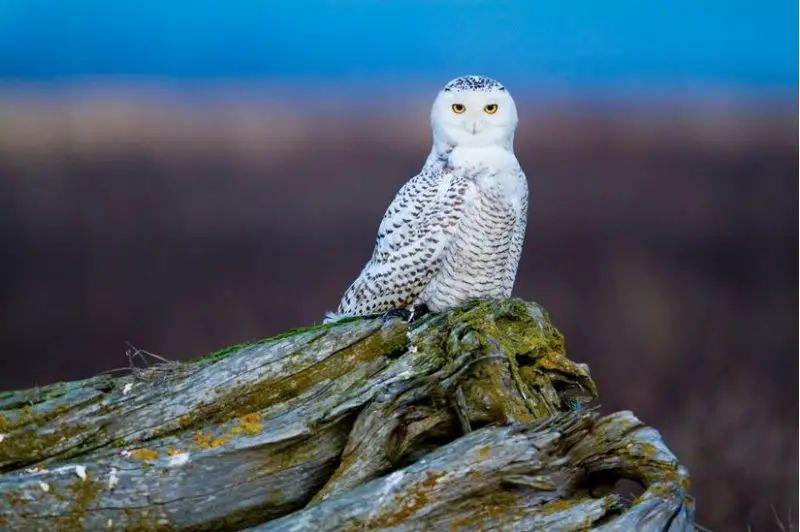
The Arctic Wanderer
Regal and radiant, the Snowy Owl is a living embodiment of the Arctic wilderness. Its thick white plumage, adapted to survive brutal polar winters, shimmers in the sunlight like snowdrift. With golden eyes and a powerful, muscular build, it is both beautiful and formidable.
While the Snowy Owl breeds in the treeless tundra of the high Arctic, it occasionally ventures far south during irruption years—periodic mass movements driven by fluctuations in lemming populations, their primary food source. In such years, a few individuals may reach as far south as Nevada, where their sudden appearance in open terrain sparks excitement among birdwatchers.
When they do arrive, they gravitate toward flat, treeless habitats that mimic their native tundra: airport runways, windswept agricultural fields, lake shores, and coastal dunes. Their hunting style involves long, slow patrols or motionless perches from which they scan for prey. Although they specialize in small mammals, they’re capable of taking waterfowl and large rodents with surprising ease.
Despite their massive appearance—Snowy Owls can have a wingspan of over five feet—they are efficient flyers, powered by strong, deep wingbeats. Their normally calm, almost statuesque demeanor makes them seem unbothered by the world, but they remain alert and calculated predators.
In Nevada, a Snowy Owl sighting is an extraordinary gift—an encounter with a bird that seems to have descended from a different realm. For those fortunate enough to see one, it becomes a lifelong memory, etched in snow-white feathers against a desert sky.
Conclusion
From desert flats to alpine forests, Nevada offers a fascinating diversity of owl species for nature lovers and birdwatchers alike. Whether you’re exploring wetlands in the south or mountain ranges in the north, these silent predators can be found roosting, gliding, or calling in the shadows. Each owl has its own niche, hunting style, and seasonal rhythm—making Nevada an unexpectedly rich landscape for discovering the secret lives of owls.

